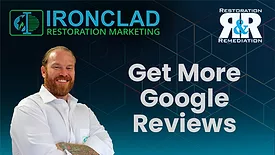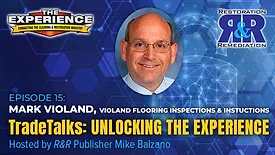Managing Your Restoration Business
For restoration professionals, marketing is not only about connection, it’s about perceptions.
Read More
Ironclad Marketing Minute
Get More Customer Reviews for Your Restoration Business
In this Ironclad Marketing Minute, you can learn how to use a simple QR code to increase customer reviews.
Read More
Trade Talks: Unlocking The Experience
The “Father of The Experience” Shares His Restoration Journey
Read MoreWinning with Workers: How Today’s Leaders Attract and Retain Top Restorers
How Purpose-Driven Work Transforms Restoration Businesses
A Monthly Series powered by KnowHow
Read More
News Headlines
Game-Changing Business Strategies for the Restoration Industry
New Book Describes Building and Scaling a Restoration Business
March 21, 2024
Trade Talks: Unlocking The Experience
Second-Generation Restoration Industry Leader…with a twist!
Read MoreTrade Talks: Unlocking The Experience
Hard Work and Passion Lead to 5 Decades of Cleaning Industry Leadership
Read MoreTrade Talks: Unlocking The Experience
Faith Leads to a Life of Success for a Restoration Industry Icon
Read MoreStay ahead of the curve with our eNewsletters.
Get the latest industry updates tailored your way.
JOIN TODAY!Copyright ©2025. All Rights Reserved BNP Media.
Design, CMS, Hosting & Web Development :: ePublishing















